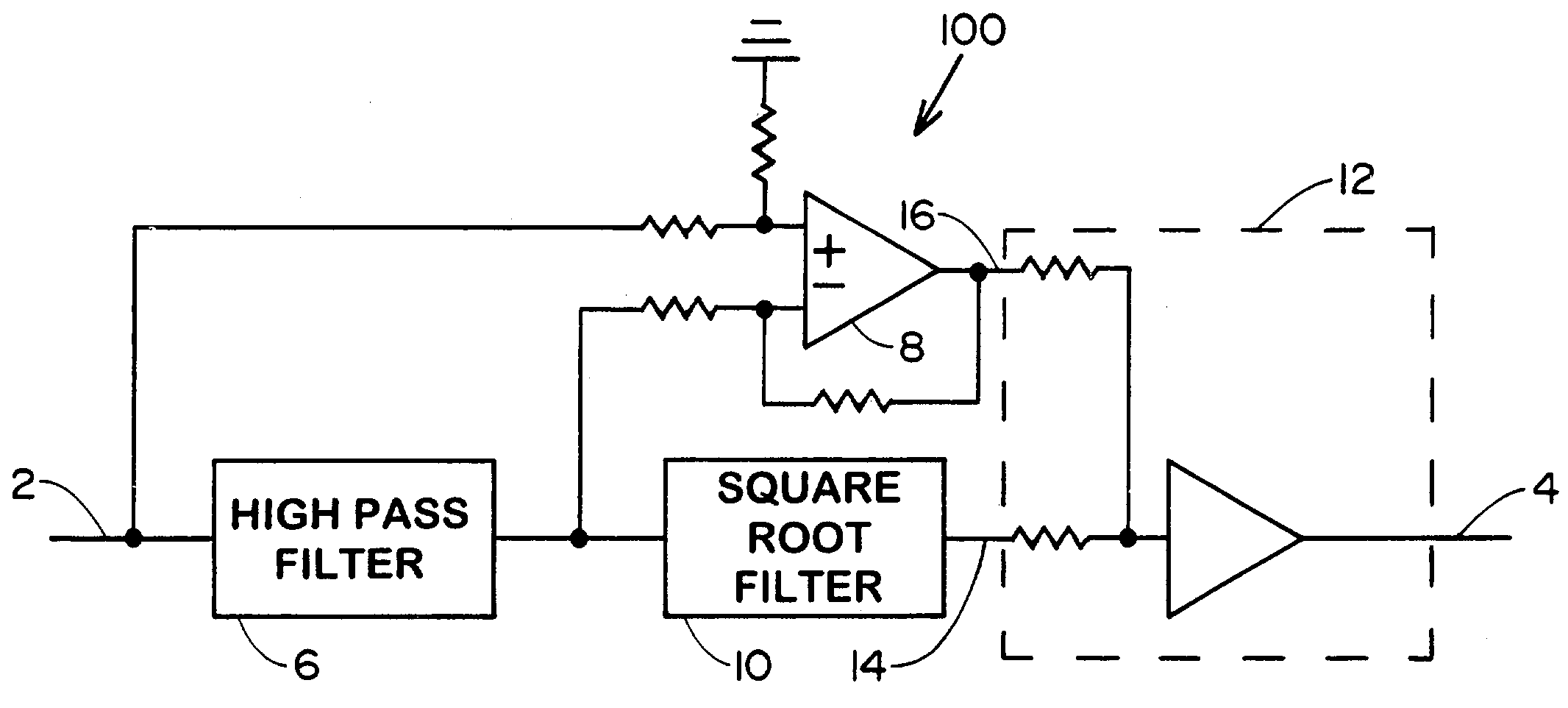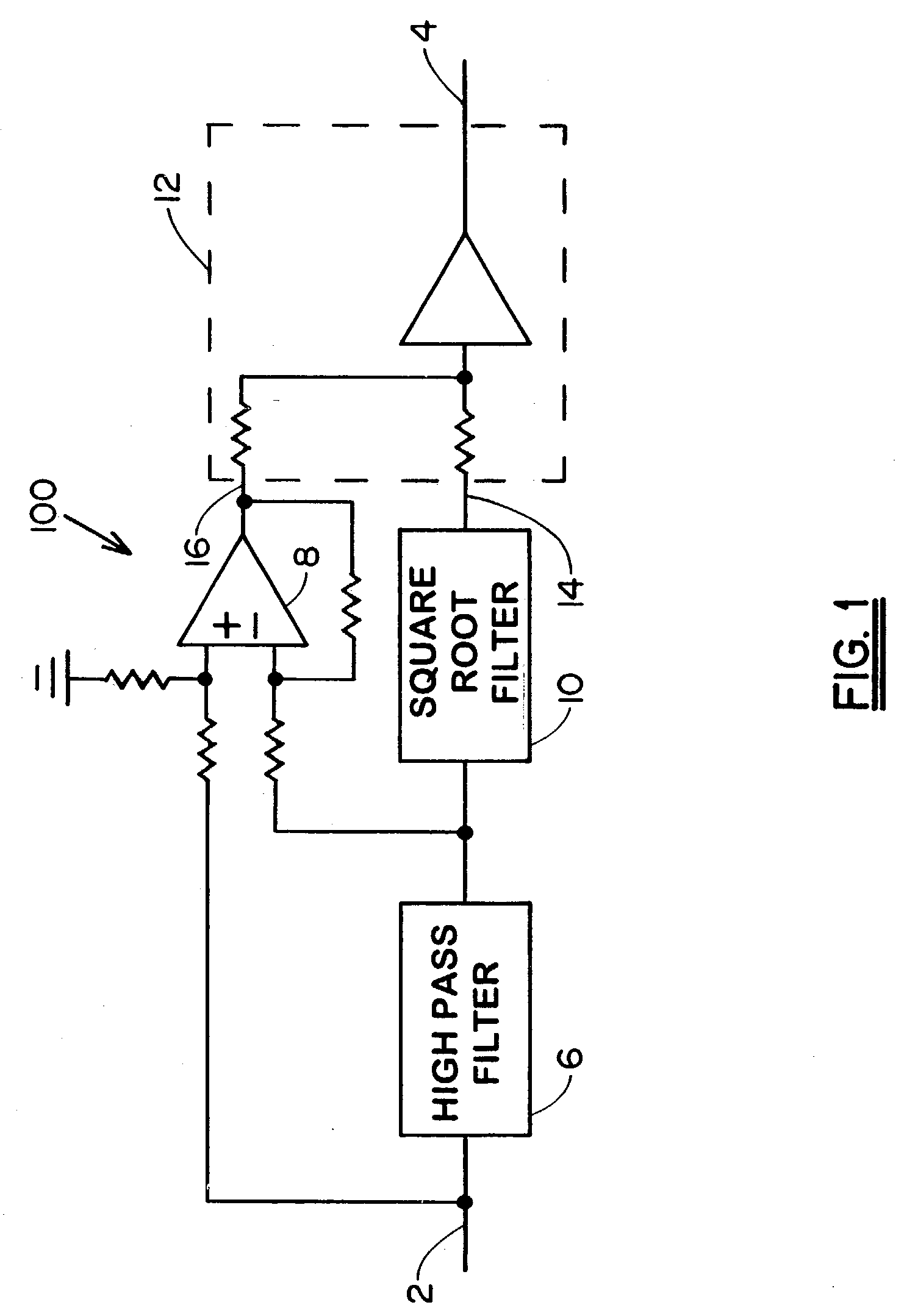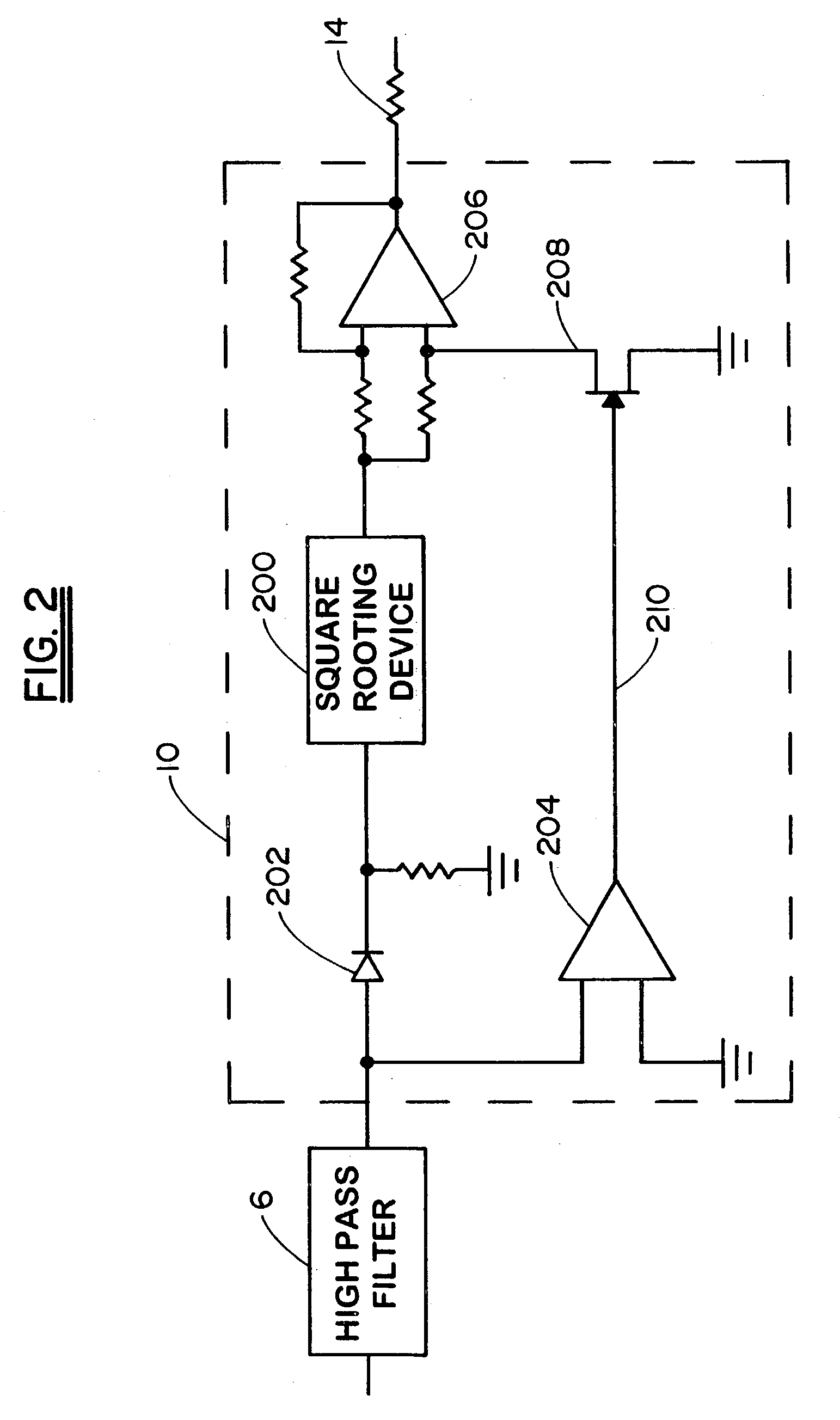Sound enhancement system
a technology of enhancement system and sound, which is applied in the direction of electrophonic musical instruments, instruments, stereo circuit arrangements, etc., can solve the problems of lack of realism, graininess, high frequency distortion of media, etc., and achieve the effects of enhancing mono-channel input signals, enhancing multi-channel input signals, and enhancing stereo imagery of input signals
- Summary
- Abstract
- Description
- Claims
- Application Information
AI Technical Summary
Benefits of technology
Problems solved by technology
Method used
Image
Examples
Embodiment Construction
[0023]Referring to FIG. 1, an input terminal 2 of the sound enhancement system 100 receives electrical signal, or “input signal” from a microphone or recorded medium. Input terminal 2 is connected to a high pass filter 6 which in turn is connected to a square root filter 10 that provides signal to a first input 14 of summer 12. Complementary filter 8 receives signal from input terminal 2 and may receive subtractive signal from high pass filter 6 as shown. The complementary filter 8 passes input signals that are not passed by high pass filter 6, that is, complementary filter 8 is essentially a low pass filter. The output of complementary filter 8 comprises the signal at the second input 16 of summer 12. The output of summer 12 is connected to the output terminal 4 of sound enhancement system 100. The instantaneous signal from square root filter 10 varies as the square root of the instantaneous signal from high pass filter 6. For a high pass filter 6 output signal represented by the e...
PUM
 Login to View More
Login to View More Abstract
Description
Claims
Application Information
 Login to View More
Login to View More - R&D
- Intellectual Property
- Life Sciences
- Materials
- Tech Scout
- Unparalleled Data Quality
- Higher Quality Content
- 60% Fewer Hallucinations
Browse by: Latest US Patents, China's latest patents, Technical Efficacy Thesaurus, Application Domain, Technology Topic, Popular Technical Reports.
© 2025 PatSnap. All rights reserved.Legal|Privacy policy|Modern Slavery Act Transparency Statement|Sitemap|About US| Contact US: help@patsnap.com



